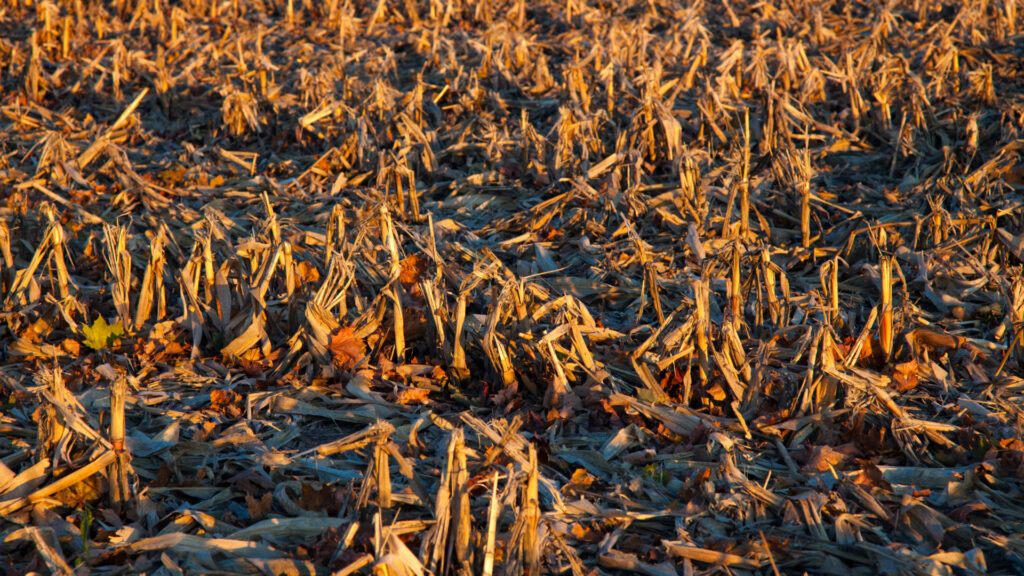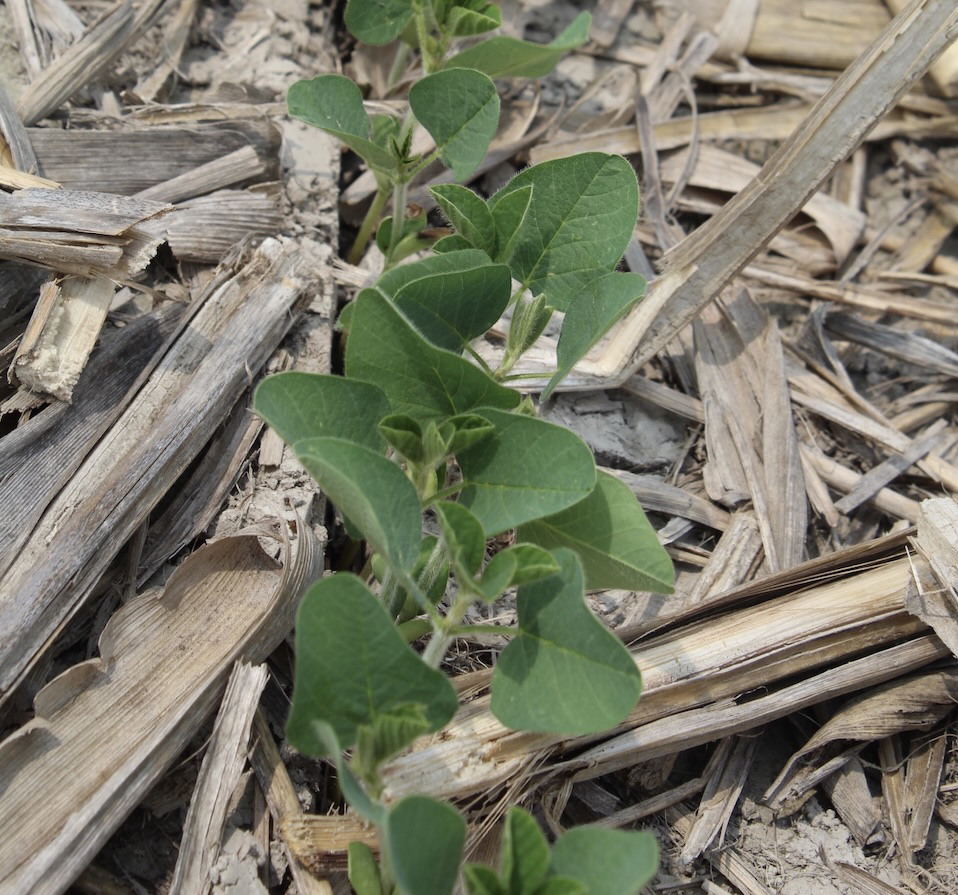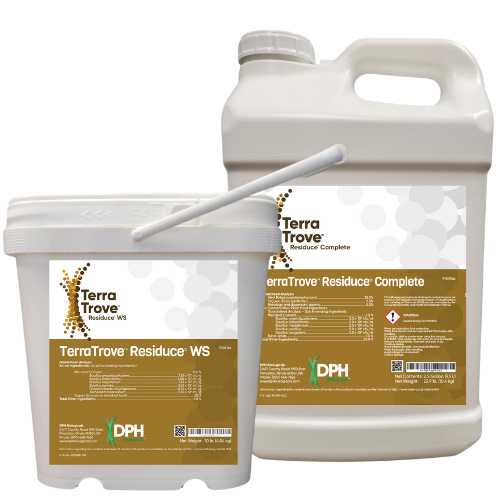8 Tips for Choosing and Using a Biodigester for Your Residue Management Needs
With today’s high-yielding crops producing copious amounts of slow to degrade post-harvest residue, top-producing growers looking to better manage crop stubble are turning to biodigesters as their solution.
Biodigesters like DPH Biologicals’ TerraTrove™ Residuce®, degrade plant material, releasing nutrients in the process. They do so by accelerating crop residue decomposition, solving the operational challenges of field residue management while improving soil health and nutrient release, supporting better field plantability, more uniform crop stands, reduced disease and pest pressure, offsetting fertilizer needs and ultimately increasing yields.
A 2022 fall Residuce application on a no-till Illinois corn field accelerated residue degradation by nearly 20% in less than five months, resulting in $45.87 per acre worth of nitrogen, phosphorous and potassium released by spring planting time, a nearly three-to-one ROI, said Alex Cochran, Ph.D., DPH Bio’s Chief Technology Officer. For detailed information on how biodigesters help growers improve their profitability, including the latest research from the University of Illinois Urbana-Champaign’s crop physiology lab, read “3 Ways Biodigesters Turn Crop Residue ‘Trash’ Into Post-Harvest ‘Treasure.”

But not all residue breakdown products are created equal, Cochran said. Plus, how growers incorporate them into their management practices impacts their success.
“The obvious target with a product like Residuce is enhancing microbial activity. At its core, it always comes down to a living organism to do the work of enhancing degradation. But, growers can support that degradation by first understanding the science behind biodigesters and what makes an effective formulation, and secondly, how and when to best use them,” Cochran said.
How to Choose a Biodigester
1. Live, Diverse Selection of Residue-Degrading Microorganisms
Select biodigesters formulated with living saprotrophic organisms, microbes that feed on dead or decaying plant matter. Found naturally in great abundance in forests or perennial grasslands, these microorganisms are typically not present in disturbed soil, like farmland, due to tillage and exposed soil.
2. Non-Living Biostimulants for Increased Efficacy
Non-living biostimulants, such as fulvic or humic acid, combined with residue-degrading microbes support a more effective formulation by stimulating microbial activity and facilitating the transfer of micronutrients released by residue-degrading organisms into the soil.
3. Food Sources to Support Microorganism Establishment
Food sources included in a biodigester formulation initiate early establishment and rapid colonization of the applied microbials.
4. Long Shelf Life and Adjuvants for Ease of Application
While there are many microorganisms that stimulate residue breakdown, not all survive without special handling needs. Look for gram-positive formulations that support extended shelf life (at least a year) without needing refrigeration. The addition of an adjuvant ensures the product sticks to its target, in this case crop residue.

Best Practice Recommendations for Using Biodigesters
1. Fall or Spring Application?
Post-harvest fall applications give the microorganisms in biodigesters plenty of time to work. But extremely cold temperatures may impede microbial establishment and sometimes there’s simply not enough time to get into fields before conditions get muddy. In that case, make a spring application. Warming weather encourages rapid colonization and spring applications have proven to quickly and effectively accelerate residue degradation in DPH Bio’s field trials.
2. Consider Wind Erosion
Strong winter winds can also reduce the effectiveness of fall biodigester applications. In cases where wind is likely to cause significant field erosion, wait until spring to apply.
3. Disturb Crop Residue at Application
Some residue disturbance, such as light discing, at the time of biodigester application is helpful to ensure good soil contact and jumpstart the colonization of residue-degrading microorganisms.
4. Combine with Other Residue Management Practices
Biodigesters plus other residue management practices such as breaking up and reducing the size of corn stover with sizing knife rollers at the time of harvest, or applying ammonium sulfate, can be combined for even better results.
About TerraTrove Residuce

The Residuce platform includes Residue WS, a dry product designed for the organic acre, and Residue Complete, a liquid formulation built with an industry leading microbial delivery platform. Both have a long shelf-life, are compatible with most other inputs and easily mixed for liquid application. Residuce WS is OMRI listed
For more information on using biodigesters in residue management, including how biodigesters can help reduce the yield penalty associated with continuous corn production, watch the recent DPH Biologicals-sponsored CropLife webinar about residue management hosted jointly with the UIUC Crop Physiology Lab.
To order Residuce, or additional information on DPH Bio’s science-led biofertility and biocontrol products, visit www.dphbio.com or call 1-800-648-7626.
